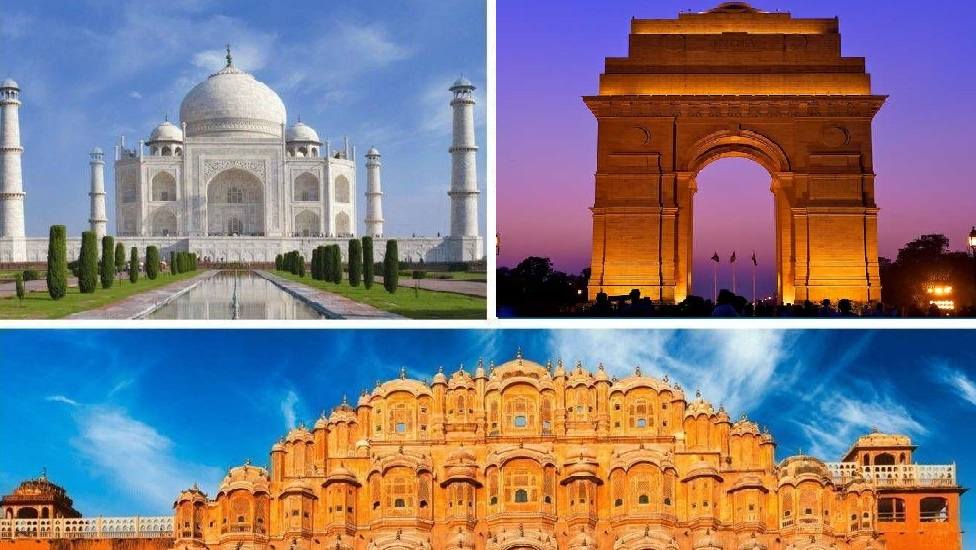India’s Golden Triangle, connecting Delhi, Agra, and Jaipur, is one of the most popular circuits for international visitors seeking to explore India’s cultural and architectural diversity. Beyond the renowned Taj Mahal or Red Fort, the route is dotted with hidden treasures that often surprise and delight foreign tourists. These lesser-known sites offer authentic experiences, quieter surroundings, and deeper insights into India’s layered history.
Agrasen ki Baoli, Delhi
Located in the heart of Delhi, Agrasen ki Baoli is an ancient stepwell that offers a tranquil escape from the city’s bustle. Foreign tourists appreciate this architectural marvel for its symmetrical design and hauntingly quiet atmosphere. Dating back to the Mahabharata era, this stepwell invites visitors to reflect on India’s traditional water conservation techniques and medieval engineering. Its 103 stone steps lead down to a reservoir that once served as a vital water source. The Baoli’s blend of history and serenity makes it a memorable stop on any Golden Triangle journey.
Mehtab Bagh, Agra
While the Taj Mahal is the centerpiece of Agra’s attractions, Mehtab Bagh provides a different perspective. This garden complex lies across the Yamuna River, perfectly aligned with the Taj Mahal, and offers an ideal vantage point, especially at sunset. Foreign travelers enjoy the peaceful environment, where they can admire the monument’s reflection on the river and capture unobstructed photographs. The garden’s history as part of the Mughal charbagh tradition adds to its appeal, providing insight into landscape design during the Mughal era.
Galta Ji Temple, Jaipur
Nestled in a narrow valley outside Jaipur, Galta Ji Temple, also known as the Monkey Temple, offers a unique spiritual experience. This temple complex consists of several shrines, sacred water tanks, and natural springs. It is home to a large population of monkeys, who are accustomed to human presence. Many foreign tourists find this site fascinating not only for its natural setting but also for its blend of wildlife and religious significance. The temple provides an authentic glimpse into local traditions and rituals.
Chand Baori, Abhaneri
Chand Baori, located in the village of Abhaneri near Jaipur, is one of India’s oldest and deepest stepwells. This architectural wonder is often overlooked on standard itineraries, but those who visit are captivated by its intricate geometry and the sheer scale of its design. With 3,500 narrow steps arranged in a precise pattern, Chand Baori showcases the ingenuity of ancient Indian engineering. Foreign visitors are often impressed by the preservation of this structure and its role in the community’s life during centuries past.
Fatehpur Sikri
Often overshadowed by Agra’s other monuments, Fatehpur Sikri is a UNESCO World Heritage Site that was once the Mughal capital. The city’s red sandstone structures, palaces, and mosques remain remarkably well-preserved. Foreign tourists value the opportunity to explore its courtyards and halls, gaining insight into the political and cultural life of the Mughal Empire. The blend of Persian, Islamic, and Indian architectural styles adds to the site’s intrigue.
Ranthambore’s Fort and Surroundings
For travelers who extend their journey beyond the traditional circuit, the Golden Triangle Tour With Ranthambore introduces them to the historic Ranthambore Fort. Located within the national park, this fort offers panoramic views of the forested surroundings and a chance to explore ancient temples, massive gates, and crumbling battlements. The combination of wildlife spotting and historic exploration appeals strongly to foreign visitors seeking a diverse experience.
Varanasi’s Ghats
Those choosing the Golden Triangle Tour with Varanasi are often moved by the spiritual atmosphere of Varanasi’s ghats. The Ganges Riverfront is lined with steps where pilgrims perform rituals, prayers, and cremation ceremonies. Foreign tourists are drawn to the profound cultural significance of these activities and the sense of timelessness that Varanasi embodies. The evening Ganga Aarti is especially popular, offering an unforgettable sensory experience with chants, bells, and lamps reflected on the river’s surface.
Neemrana Fort
Neemrana Fort, situated between Delhi and Jaipur, is a 15th-century fort-palace that offers a unique glimpse into India’s feudal history. Foreign visitors appreciate the opportunity to explore its multi-level terraces, hidden passages, and royal quarters. The fort’s restoration preserves its historic charm while allowing visitors to imagine life during the reign of the local chieftains who once ruled the region.
Conclusion: A Journey Beyond the Famous
These hidden treasures along the Golden Triangle Tour provide foreign tourists with deeper, richer experiences beyond the headline monuments. From ancient stepwells and spiritual temples to serene gardens and forgotten capitals, the Golden Triangle’s lesser-known sites reveal India’s enduring traditions and architectural brilliance. Visitors leave with a more nuanced understanding of the region’s cultural fabric, making their journey truly memorable.
